
How to Use 8 OHM 20W SPEAKER: Examples, Pinouts, and Specs
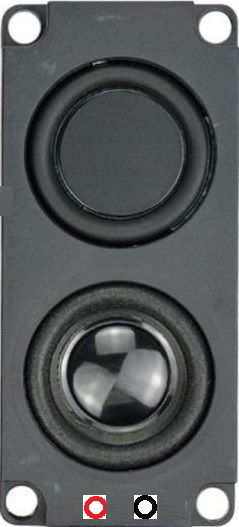
 Design with 8 OHM 20W SPEAKER in Cirkit Designer
Design with 8 OHM 20W SPEAKER in Cirkit DesignerIntroduction
The 8 OHM 20W SPEAKER is an electroacoustic transducer designed to convert electrical signals into audible sound. With a resistance of 8 ohms and a power handling capacity of 20 watts, this speaker is suitable for a wide range of audio applications, from DIY projects to commercial audio systems.
Explore Projects Built with 8 OHM 20W SPEAKER
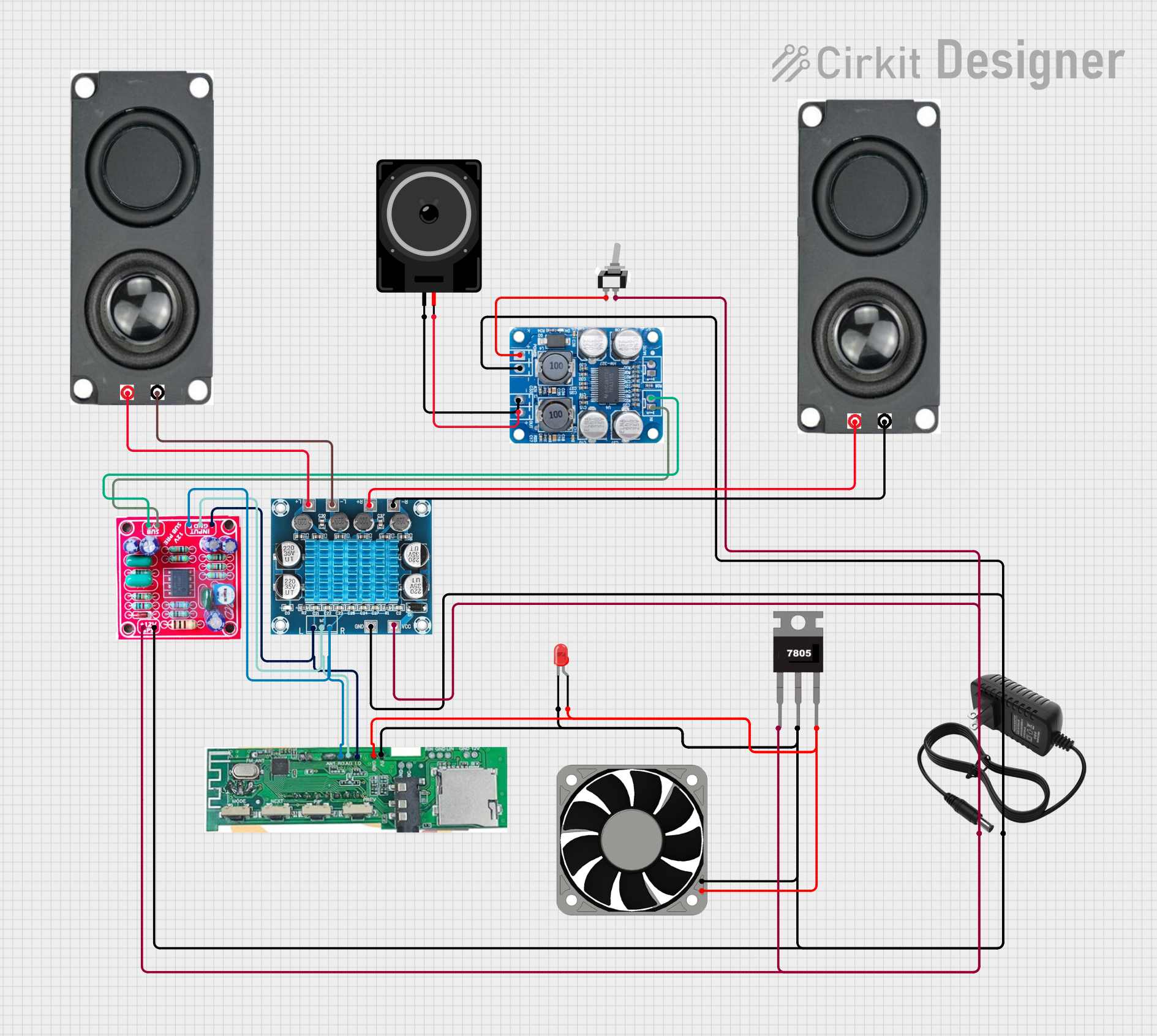
 Open Project in Cirkit Designer
Open Project in Cirkit Designer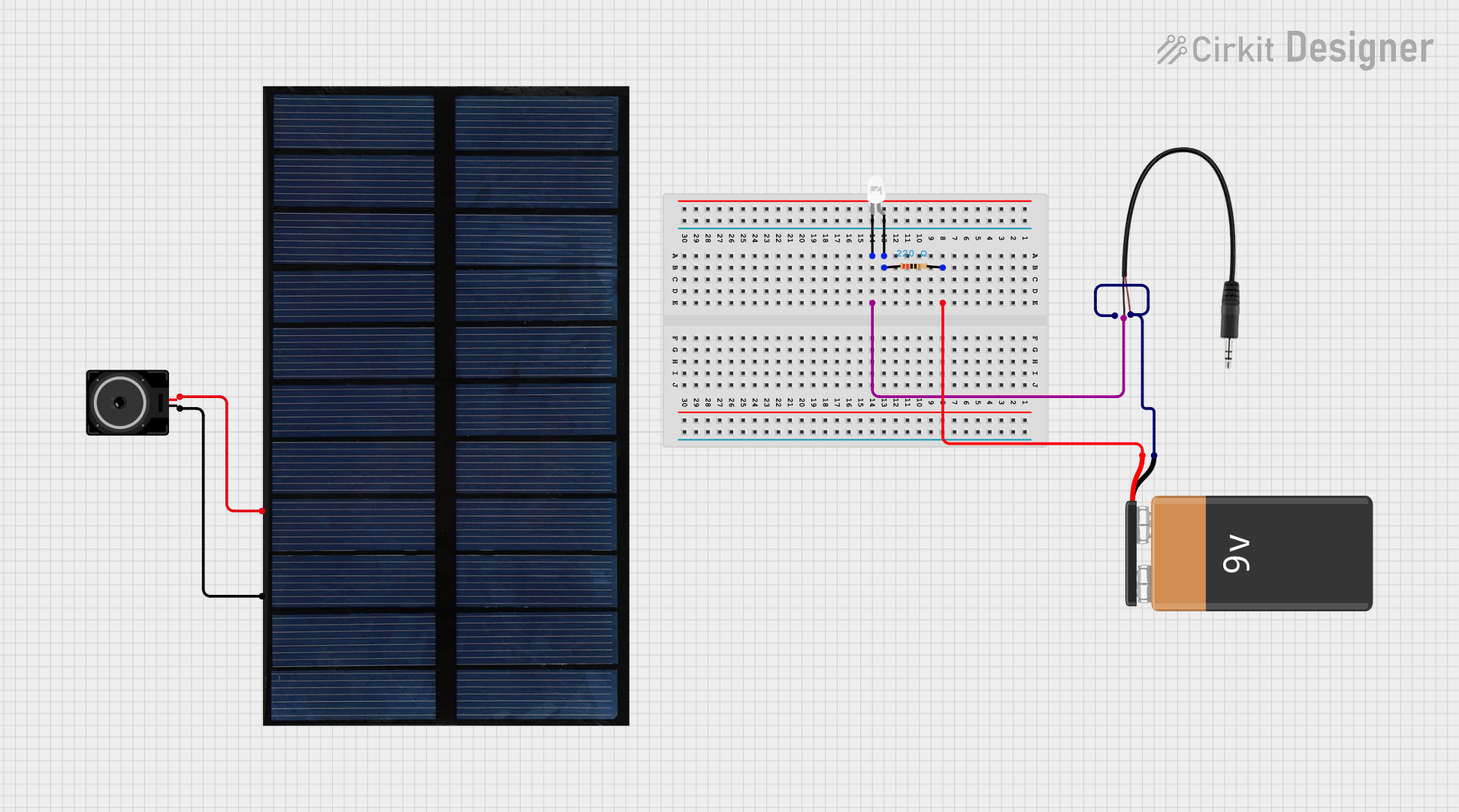
 Open Project in Cirkit Designer
Open Project in Cirkit Designer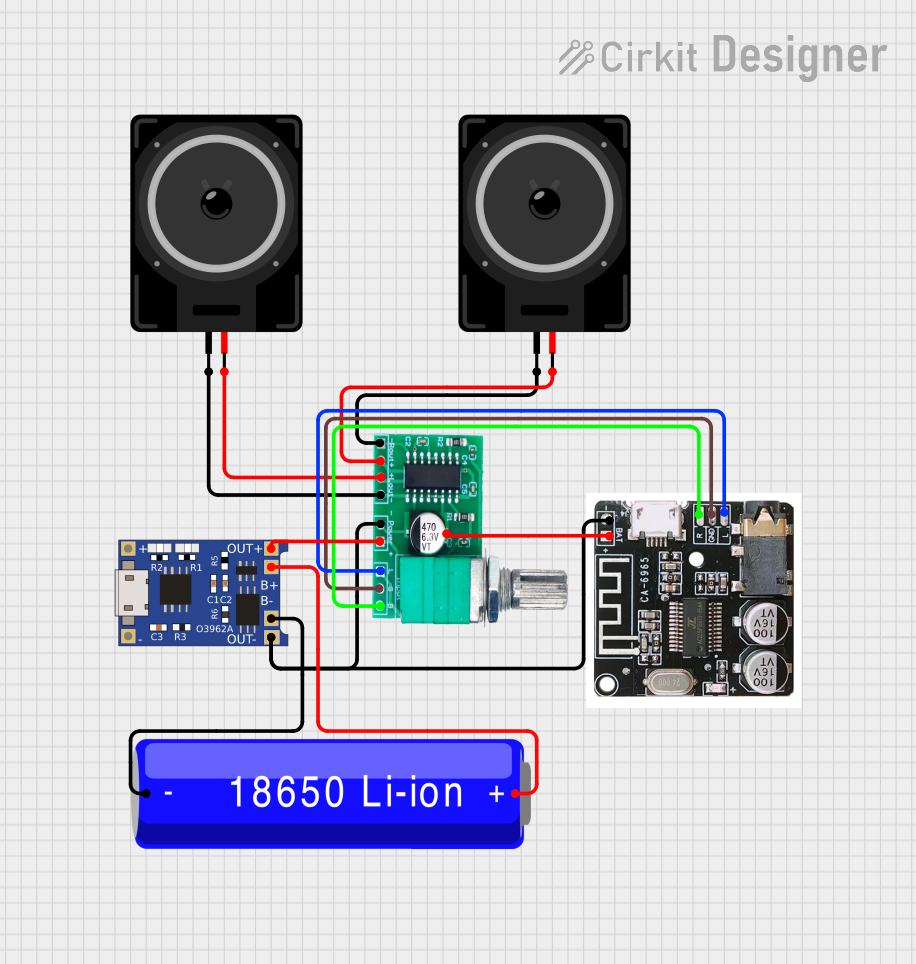
 Open Project in Cirkit Designer
Open Project in Cirkit Designer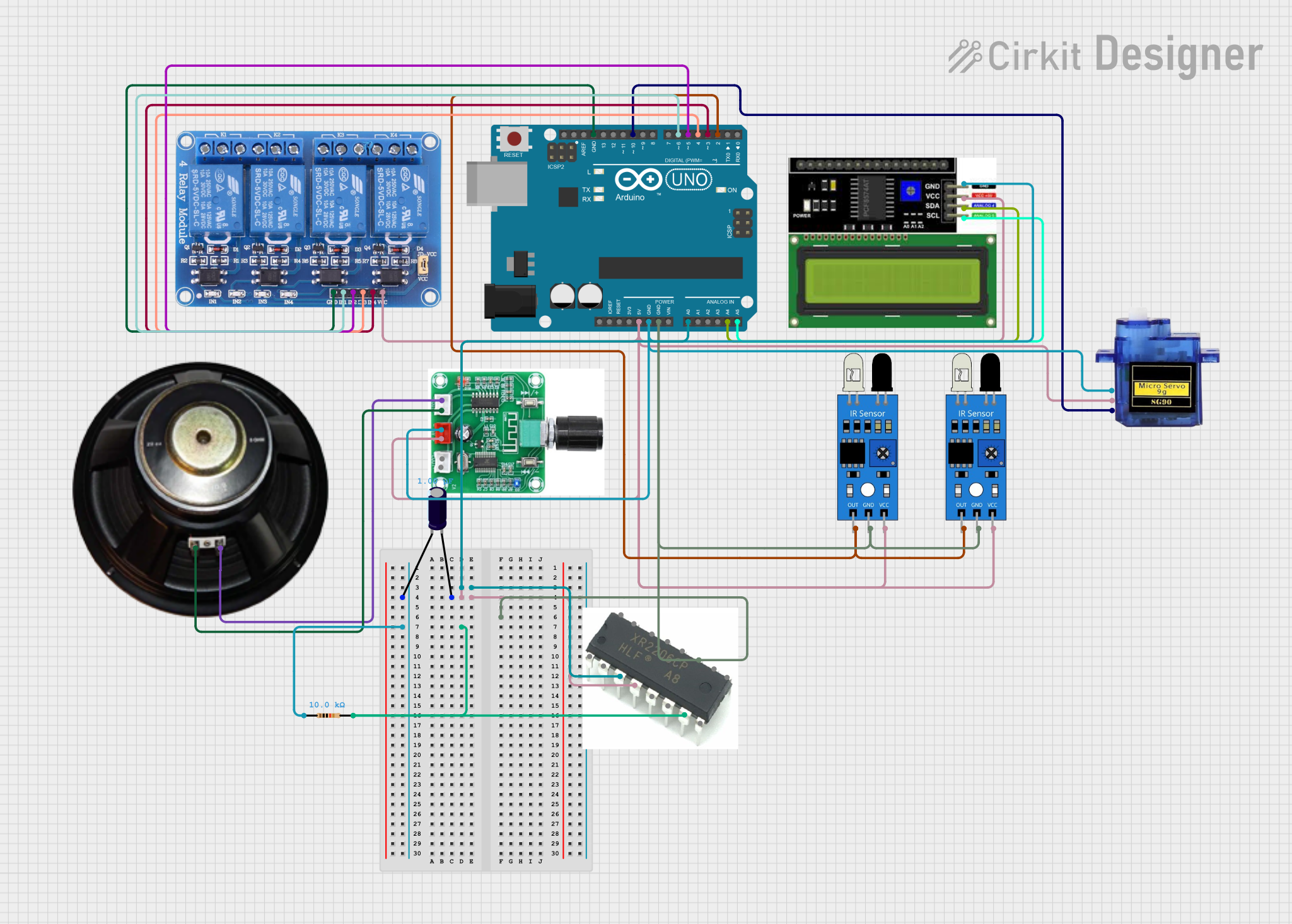
 Open Project in Cirkit Designer
Open Project in Cirkit DesignerExplore Projects Built with 8 OHM 20W SPEAKER

 Open Project in Cirkit Designer
Open Project in Cirkit Designer
 Open Project in Cirkit Designer
Open Project in Cirkit Designer
 Open Project in Cirkit Designer
Open Project in Cirkit Designer
 Open Project in Cirkit Designer
Open Project in Cirkit DesignerCommon Applications and Use Cases
- Home audio systems
- Public address systems
- DIY audio projects
- Educational electronics
- Robotics with audio feedback
Technical Specifications
Key Technical Details
| Parameter | Specification |
|---|---|
| Nominal Impedance | 8 ohms |
| Power Handling | 20 watts |
| Frequency Response | Typically 20 Hz to 20 kHz (varies by model) |
| Sensitivity | Varies by model, typically around 88-92 dB |
| Magnet Material | Ferrite or Neodymium (varies by model) |
Pin Configuration and Descriptions
| Pin Number | Description |
|---|---|
| 1 | Positive Terminal |
| 2 | Negative Terminal |
Usage Instructions
How to Use the Component in a Circuit
- Identify the Terminals: Locate the positive (+) and negative (-) terminals on the speaker.
- Connect to Amplifier: Connect the speaker's positive terminal to the amplifier's output positive terminal, and the speaker's negative terminal to the amplifier's output negative terminal.
- Power Rating: Ensure that the amplifier's output does not exceed the speaker's power handling capacity of 20 watts to avoid damage.
- Impedance Matching: Match the speaker's impedance with the amplifier's recommended load to ensure optimal performance and avoid damage to the amplifier.
Important Considerations and Best Practices
- Avoid Overpowering: Do not exceed the speaker's power rating as it can cause permanent damage to the speaker.
- Proper Mounting: Secure the speaker in an appropriate enclosure or mounting bracket to prevent vibrations and potential damage.
- Ventilation: Ensure adequate ventilation around the speaker to dissipate heat generated during operation.
- Cable Quality: Use good quality cables and connectors to minimize signal loss and interference.
Troubleshooting and FAQs
Common Issues Users Might Face
- Distortion: If the sound is distorted, check if the speaker is being overpowered or if there is a loose connection.
- No Sound: Verify connections, ensure the amplifier is powered on, and check if the speaker is damaged.
- Low Volume: Ensure that the amplifier's volume is set correctly and that the speaker's sensitivity matches the application's requirements.
Solutions and Tips for Troubleshooting
- Check Connections: Ensure all connections are secure and free of corrosion.
- Test with Another Speaker: If possible, connect another speaker to the amplifier to determine if the issue is with the speaker or the amplifier.
- Inspect for Damage: Look for visible signs of damage to the speaker cone or terminals.
FAQs
Q: Can I use this speaker with any amplifier? A: You can use this speaker with any amplifier that supports an 8-ohm load and does not exceed the speaker's 20-watt power rating.
Q: Do I need a crossover network for this speaker? A: It depends on your application. For full-range use, a crossover may not be necessary. For more complex systems, a crossover can help direct appropriate frequencies to the speaker.
Q: How can I improve the sound quality of the speaker? A: Using a proper enclosure designed for the speaker's characteristics can significantly improve sound quality. Also, ensure that the amplifier and source audio are of high quality.
Q: Is it possible to connect multiple speakers together? A: Yes, but you must understand how to correctly wire them in series or parallel to maintain an appropriate load for the amplifier.
Note: This documentation is for general guidance. For specific models, refer to the manufacturer's datasheet for exact specifications and recommendations.